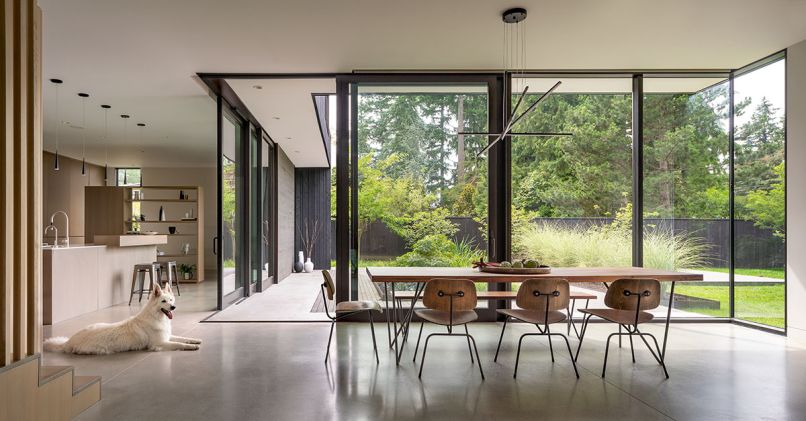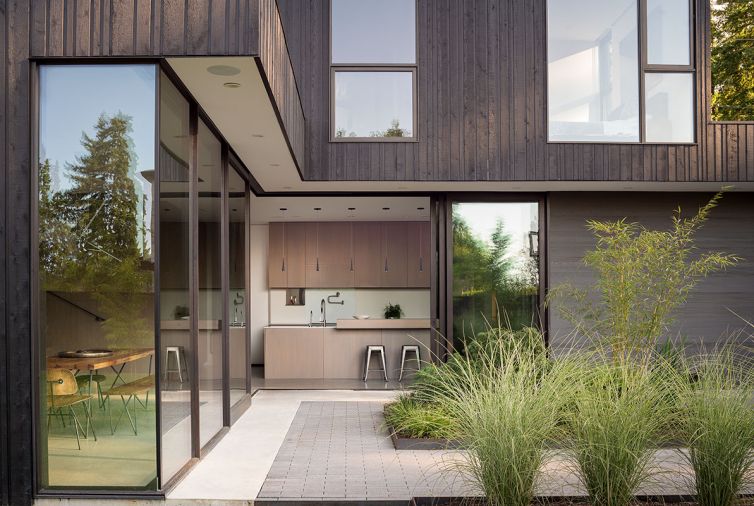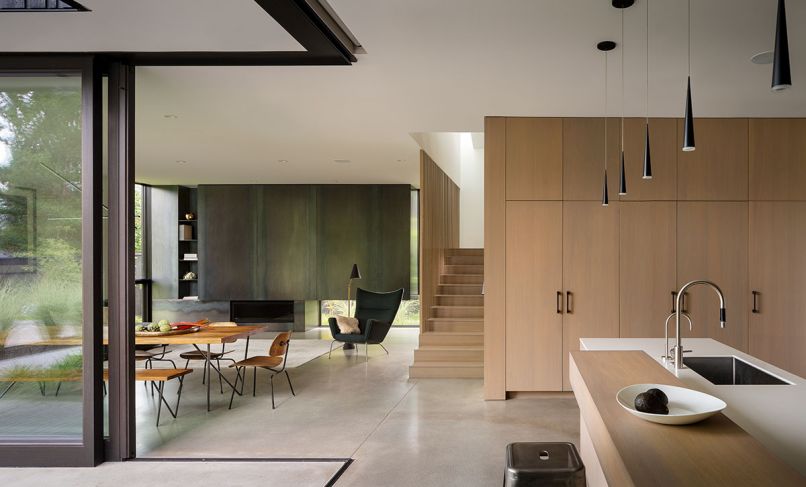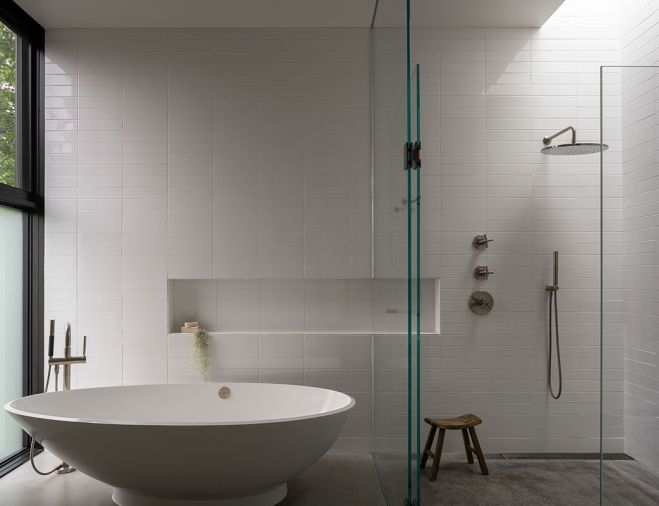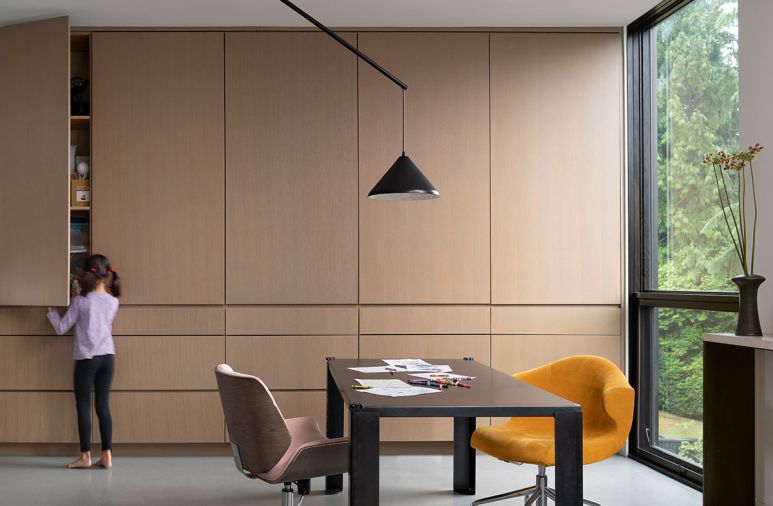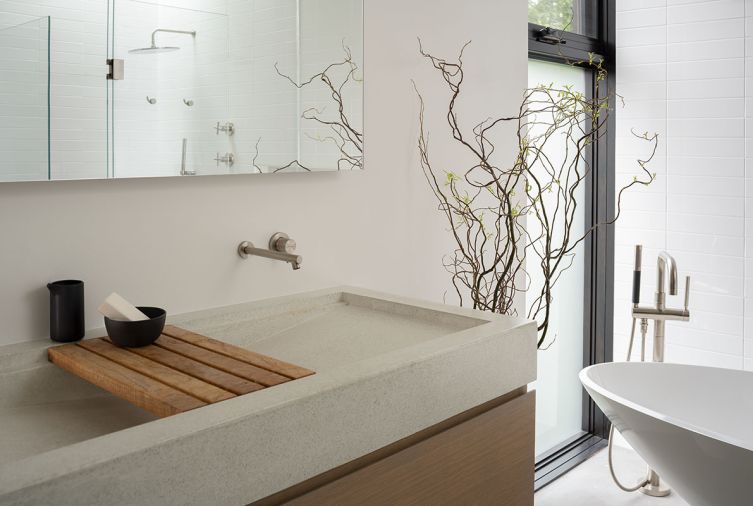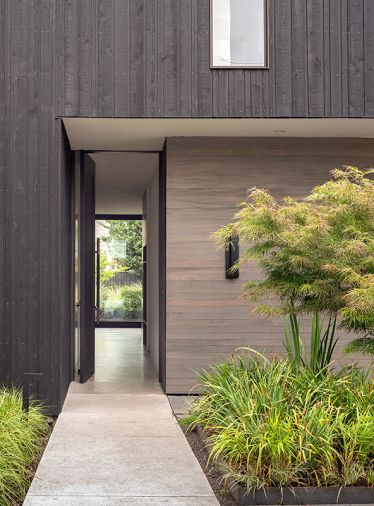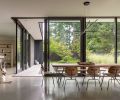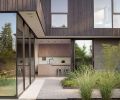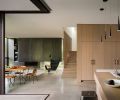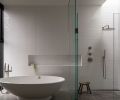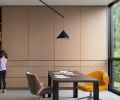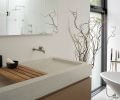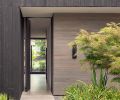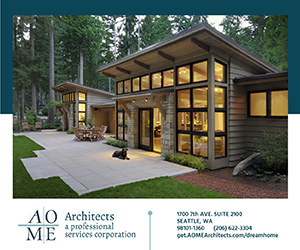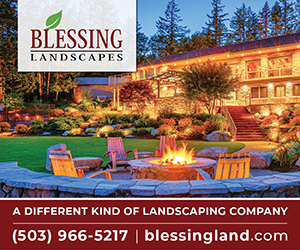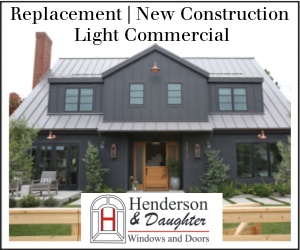Despite its location on a busy arterial street in the Clyde neighborhood of Bellevue, this home is an oasis of calm. “The question was how to create a house that has safe, protective exposure to the busy street, while also feeling very open and private on the inside,” says architect Matt Wittman, who is principal alongside landscape designer Jody Estes at the Seattle-based firm Wittman Estes.
Thanks to the firm’s interdisciplinary approach of seamlessly connecting nature and architecture, their answer to the site’s innate problems was an adroit one: to flank the home’s front and back in private courtyards. “In all of our projects, we often think about landscape principles first,” says Wittman.
Now, entrance from the sidewalk is granted through a black stained cedar fence, itself stepped back from the sidewalk by a softening row of trees and grasses. A concrete path leads through the entry courtyard, where beds of grasses and ornamental trees intertwine with the hardscaping. This first courtyard acts as a buffer between house and street, creates a safe place for children and dogs to play, and marks the first in a series of layers throughout the property. “As you move through the home, there are these various threshold layers,” says Wittman. “This idea goes back to the concept of Yo-Ju.”
Yo-Ju, says the firm, means “secluded living” in Mandarin Chinese, and was the guiding principle for the house’s overall concept, also giving it its name: Yo-Ju Courtyard House. The concept draws on Chinese landscape and courtyard design, as well as Chinese landscape painting techniques, which employ layers to create a feeling of depth. “Historically, these lots had bigger [house] square footages that were more spread out,” says Wittman. But by utilizing such techniques, the design team succeeded in making the home’s interior spaces live much larger.
The clients’ goals were to ensure safe outdoor zones for their three small children, privacy from the busy road, and an interior that balances shared living spaces with more private spots for everyone to retreat – all within 3,460 square feet. Wittman laid out the communal living areas so they wrap around the rear exterior courtyard, then lined two walls in glass doors that peel back from the corner. Thus, standing in the living room offers partial views into the rest of the main floor, through the layers of glass and floating oak casework, as well as into the rear courtyard, with its own layer of landscaping. The eye “doesn’t know something is not that far distance-wise, because the layers give it depth,” says Wittman.
Key to the home’s successful execution was the thoughtful building approach led by DME Construction. “Not only do these details need to work aesthetically, but as the builder, you have to think about how the structure carries these corners that appear to be free floating. How do you get those beams to work with the lighting placement, and so on,” says David Elwell, president of DME. “So that in the finished product, no one thinks about the structural elements that are there.”
Instead, the focus is on the experience of moving through the house. Materials play a big part in blurring the borders between inside and out, and from room to room. Things like the grey oak casework woven throughout, as well as a steel fireplace façade that seems to hover over the windows. Concrete flooring sweeps from inside to an exterior path. Upstairs, the program gets more private, with the bedrooms and an art room placed there, and the continuity of materials ensures it flows effortlessly with the floor below.
All of this speaks to how the home deftly balances opposites, utilizing another ancient Chinese landscape design concept called the “Big Hide.” “That means you’re within an environment with a lot of people and things around you, but you’re secluded within that,” says Wittman. Best of all, as the neighborhood grows up around the house, so too will the courtyard plantings, and the seclusion and serenity that the entire project fosters. “As the buildings all around get bigger and denser, and the street busier, you’re almost hiding in plain sight,” says Wittman. “The gardens make you feel like you’re still in nature.”
PROJECT SOURCES
CONTACTOR
DME Construction
dmeconstruction.com
ARCHITECT, INTERIOR DESIGN & LANDSCAPE DESIGN
Wittman Estes
wittman-estes.com
PAVERS
Mutual Materials
mutualmaterials.com

